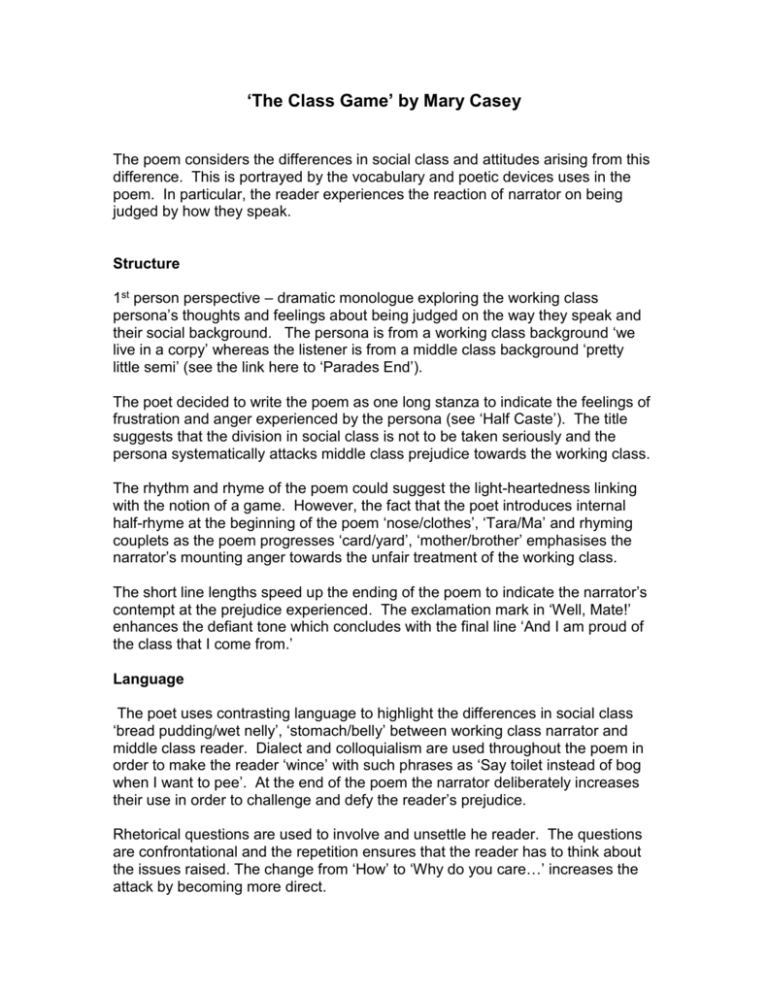'The Class Game' Analysis: Social Class & Poetic Devices
advertisement

‘The Class Game’ by Mary Casey The poem considers the differences in social class and attitudes arising from this difference. This is portrayed by the vocabulary and poetic devices uses in the poem. In particular, the reader experiences the reaction of narrator on being judged by how they speak. Structure 1st person perspective – dramatic monologue exploring the working class persona’s thoughts and feelings about being judged on the way they speak and their social background. The persona is from a working class background ‘we live in a corpy’ whereas the listener is from a middle class background ‘pretty little semi’ (see the link here to ‘Parades End’). The poet decided to write the poem as one long stanza to indicate the feelings of frustration and anger experienced by the persona (see ‘Half Caste’). The title suggests that the division in social class is not to be taken seriously and the persona systematically attacks middle class prejudice towards the working class. The rhythm and rhyme of the poem could suggest the light-heartedness linking with the notion of a game. However, the fact that the poet introduces internal half-rhyme at the beginning of the poem ‘nose/clothes’, ‘Tara/Ma’ and rhyming couplets as the poem progresses ‘card/yard’, ‘mother/brother’ emphasises the narrator’s mounting anger towards the unfair treatment of the working class. The short line lengths speed up the ending of the poem to indicate the narrator’s contempt at the prejudice experienced. The exclamation mark in ‘Well, Mate!’ enhances the defiant tone which concludes with the final line ‘And I am proud of the class that I come from.’ Language The poet uses contrasting language to highlight the differences in social class ‘bread pudding/wet nelly’, ‘stomach/belly’ between working class narrator and middle class reader. Dialect and colloquialism are used throughout the poem in order to make the reader ‘wince’ with such phrases as ‘Say toilet instead of bog when I want to pee’. At the end of the poem the narrator deliberately increases their use in order to challenge and defy the reader’s prejudice. Rhetorical questions are used to involve and unsettle he reader. The questions are confrontational and the repetition ensures that the reader has to think about the issues raised. The change from ‘How’ to ‘Why do you care…’ increases the attack by becoming more direct. The poet uses imagery to convey the contrast between the two classes: ‘my hands are stained with toil’ suggesting hard work contrasting with the ‘soft lilywhite’ hands of the middle class. The simile ‘stick in your gullet like a sour plum’ shows that the narrator is fully aware of the adverse reaction of the middle class readers when they hear her dialect and colloquialisms. Essay title Explain how effectively Casey has used vocabulary and poetic devices to portray differences in social class and her attitude towards them. Use examples from the poem to explain our answer.s










